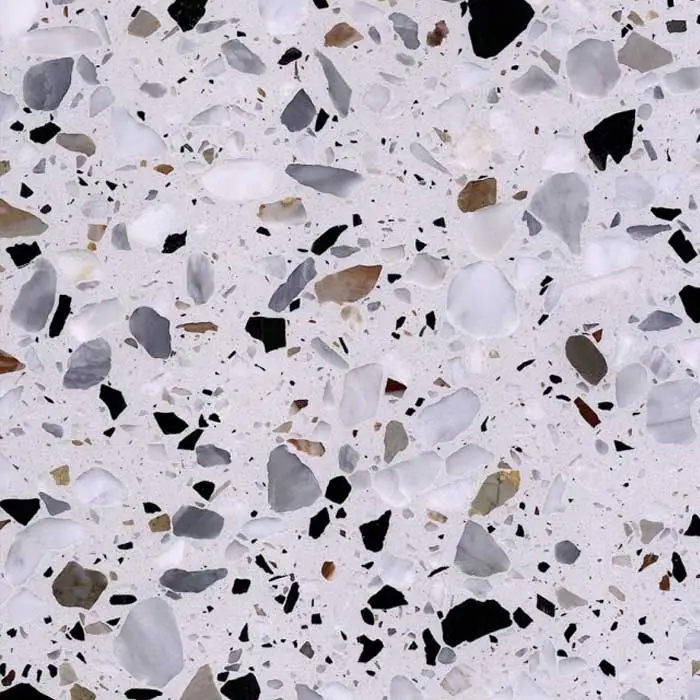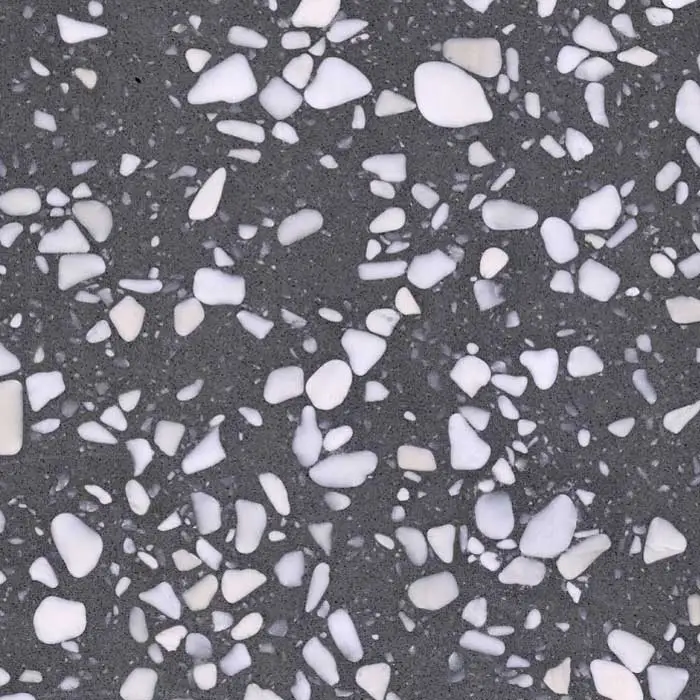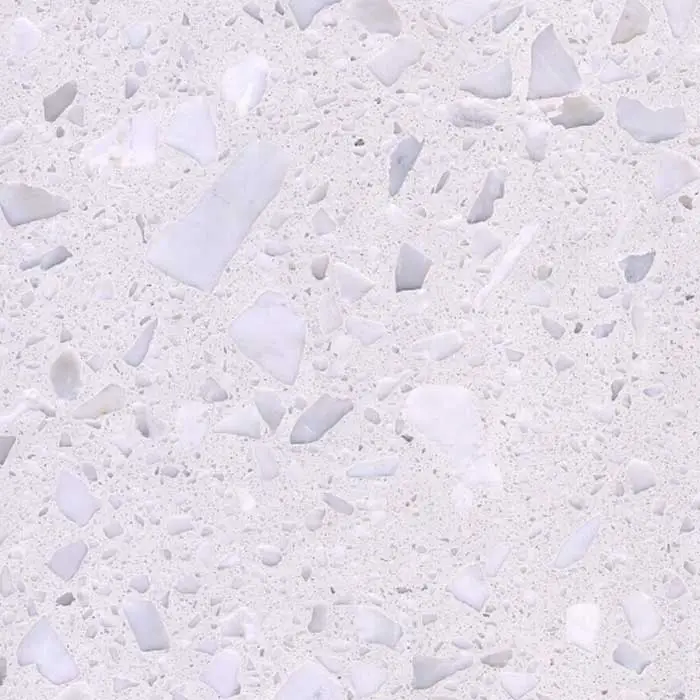Terrazzo stone flooring is a traditional floor material that combines beauty and durability. It is widely used in homes, commercial and public buildings for its smooth texture, diverse designs and long service life. However, due to its smooth surface and special material, many people have doubts about its anti-slip performance in wet conditions. Is terrazzo stone flooring slippery when wet? This question involves many aspects such as physical properties, surface treatment technology and usage environment.
This article will discuss in detail the material characteristics, anti-slip performance of terrazzo stone flooring, and how to effectively avoid the risk of slipping in wet conditions. Through professional analysis, we will reveal the answer to this question and provide targeted suggestions to ensure the safety and practicality of terrazzo stone flooring in different usage environments.

What are the characteristics of terrazzo stone flooring?
To understand whether terrazzo stone flooring will become slippery in wet conditions, you first need to understand its material and structural characteristics. Terrazzo stone flooring is formed by cement or resin as a matrix, mixed with marble, granite, glass or other aggregates, and then polished and polished. Here are some of its key features:
1. Surface smoothness
The smoothness of terrazzo stone flooring depends on its polishing process. Highly polished terrazzo has a mirror-like surface and feels smooth to the touch; while terrazzo that is not polished or treated to a matte effect has a rougher surface and greater friction.
2. Water absorption of the material
Traditional cement-based terrazzo has a certain degree of water absorption, but modern resin-based terrazzo has low water absorption or even no water absorption. This affects the wet state of the floor and the anti-slip performance of the surface.
3. Diversity of surface treatment
In order to improve the practicality of terrazzo stone flooring, manufacturers usually apply different surface treatments to it according to its use, such as adding an anti-slip coating or choosing a matte polish. These treatment methods directly affect the performance of the floor in wet conditions.
Anti-slip performance of terrazzo stone flooring in wet conditions
Whether terrazzo stone flooring becomes slippery when wet is related to many factors, including the smoothness of the floor, the ambient humidity, and the type of soles of the walkers.
1. Anti-slip performance of polished terrazzo stone flooring
The surface of highly polished terrazzo is extremely smooth. When it encounters water or other liquids, the friction of the surface will be significantly reduced, which increases the risk of slipping. This phenomenon is similar to the wet surface of tile or marble, which may cause safety hazards in certain environments.
2. Performance of matte or rough-finished terrazzo stone flooring
The surface friction coefficient of matte or rough-finished terrazzo stone flooring is higher, which can provide certain anti-slip performance even when wet. This treatment is mostly used in high-traffic areas such as commercial lobbies, school corridors or hospital walkways.
3. Effect of coating treatment on anti-slip performance
Modern terrazzo stone flooring is usually treated with an anti-slip coating, which can form a layer of tiny bumps and grooves on the surface of the floor, thereby significantly improving the friction in slippery conditions. Especially in areas prone to moisture, such as restaurants and bathrooms, the use of anti-slip coating is essential.
4. Effect of environmental factors on anti-slip performance
● Environmental humidity, water accumulation and liquid type will affect the anti-slip performance of terrazzo stone flooring. For example:
● Slightly damp state: When there is less water, the surface friction will be slightly reduced, but the risk is not great.
● Water accumulation state: A large amount of water will form a water film, which will increase the risk of slipping.
● Oil stains: The lubricating effect of oil stains is stronger than that of water, which will significantly reduce friction.

Potential causes of slipping on terrazzo stone flooring
The phenomenon of slipping in a wet state is not caused by a single factor, but the result of a combination of multiple factors. Here are some common factors:
1. Inadequate surface treatment
Terrazzo stone flooring without anti-slip treatment has low friction when wet, especially when walking on a smooth surface, it is easy to lose balance.
2. Improper environmental cleaning
If there are uncleaned liquids, oil stains or other greasy substances on the floor, it is difficult to avoid the risk of slipping even if the anti-slip performance is good.
3. Mismatched use environment
Using polished terrazzo in an environment that requires high anti-slip performance may increase the risk of slipping. For example, polished terrazzo is not suitable in wet areas such as kitchens and bathrooms.
4. The material of the walker's sole
The material and pattern of the sole directly affect its friction with the floor. For example, a smooth sole is more likely to slip on a wet floor, while a non-slip sole provides better grip.
Consequences of not cleaning or treating
If the cleaning and anti-slip treatment of terrazzo stone flooring are neglected for a long time, the following consequences may occur:
1. Safety hazards
The long-term presence of stagnant water or oil stains will significantly increase the risk of slipping, causing potential harm to family members or visitors in public places.
2. Floor surface loss
The accumulation of moisture and stains may cause the surface of terrazzo stone flooring to lose its luster and even accelerate its weathering.
3. Increased maintenance costs
If the anti-slip treatment is neglected, slip accidents may result in additional repair and compensation costs, which are much higher than the cost of regular maintenance and treatment.

How to improve the anti-slip performance of terrazzo stone flooring?
To ensure the safe use of terrazzo stone flooring in wet conditions, the following measures can be taken:
1. Anti-slip treatment of the surface
During the construction process, choosing a matte polish or anti-slip coating treatment can significantly improve the friction of the terrazzo stone flooring.
2. Regular cleaning and maintenance
Keep the floor clean, clean water stains and oil stains in time, and avoid liquid accumulation on the floor.
3. Use anti-slip mats
In areas prone to moisture (such as kitchens or bathrooms), anti-slip mats can be laid to increase friction and reduce the risk of slipping.
4. Wear suitable shoes
In wet environments, it is recommended to wear shoes with anti-slip soles to reduce the possibility of slipping.
5. Add texture or friction layer
If the terrazzo stone flooring is used in industrial or public areas, anti-slip textures can be added to the surface through special processes to further enhance the anti-slip effect.
For wholesale building material solutions, trust Foshan Rongguan. Our products, including quartz countertops and terrazzo flooring, are manufactured with precision and delivered at cheap prices worldwide. Request a quote today to take advantage of our promotions!

